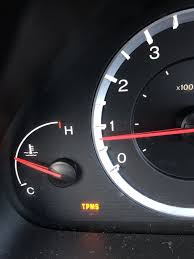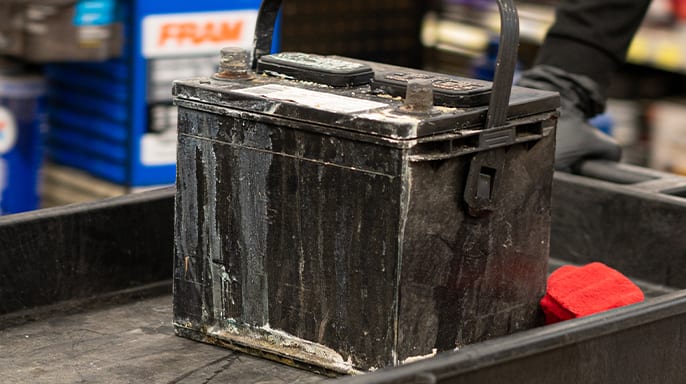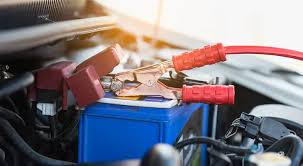Will My Car Pass Inspection With Tire Pressure Light On?

The tire pressure light on your dashboard can be a common concern for many drivers, especially when it comes time for a vehicle inspection. Whether or not your car will pass an inspection with the tire pressure light illuminated depends on the type of inspection required in your area and the specific reason for the light being on.
In this article, we’ll discuss the impact of a tire pressure warning light on your vehicle inspection and provide some helpful information about tire pressure monitoring systems (TPMS).
What Does the Tire Pressure Light Mean?
The tire pressure light indicates that one or more of your car’s tires are underinflated or overinflated. Modern vehicles are equipped with a Tire Pressure Monitoring System (TPMS), which monitors the air pressure in each tire and alerts you if the pressure falls below or exceeds the recommended level. This warning light typically resembles an exclamation point inside a horseshoe shape.
Causes for the Tire Pressure Light to Turn On:
- Low Tire Pressure: The most common cause for the light to come on is low tire pressure, which can happen due to changes in temperature, a slow leak, or an issue with the valve stem.
- Temperature Changes: Tire pressure naturally drops in cold weather. A sudden temperature change, such as a cold front, can trigger the TPMS.
- Tire Damage or Puncture: A punctured tire can cause a loss in air pressure, causing the light to illuminate.
- Faulty TPMS Sensor: Sometimes, the tire pressure light may be on due to a malfunctioning TPMS sensor.
Will My Car Pass Inspection With the Tire Pressure Light On?
The answer largely depends on the type of inspection and local regulations.
1. Vehicle Safety Inspection
In many states or countries, a vehicle safety inspection is required to ensure that your car is roadworthy and meets minimum safety standards. The tire pressure light, although not directly related to vehicle safety features such as brakes or lights, can still be a reason for failure depending on local laws.
- In some states or regions: A tire pressure light may not cause a failure during a safety inspection as long as the tires are in good condition, and there’s no obvious issue like a flat tire.
- In other areas: A functioning TPMS system is considered part of the vehicle’s safety equipment, and if the light is on, it may result in a failed inspection, even if there are no immediate tire issues.
2. Emissions Inspection
An emissions inspection focuses on the environmental impact of your vehicle and is generally not concerned with tire pressure. Therefore, the tire pressure light would not affect your ability to pass an emissions inspection.
3. TPMS System Check
Some states may have specific guidelines related to the TPMS system, especially in newer vehicles. In these cases, if the tire pressure light is on due to a malfunctioning sensor or system failure, it may result in a failed inspection. If the TPMS system is faulty or disabled, the car may not pass inspection.
What Should You Do If Your Tire Pressure Light Is On Before an Inspection?
To ensure that your car passes the inspection, here’s what you can do before heading to the testing station:
1. Check and Adjust the Tire Pressure
- Use a Tire Pressure Gauge: Check the air pressure in all four tires using a reliable tire pressure gauge. Compare the readings with the recommended tire pressure, which is usually found on the driver’s side doorframe or in the owner’s manual.
- Inflate or Deflate: If you find that any tire is underinflated or overinflated, adjust the air pressure accordingly. Proper tire pressure is critical for your safety, fuel efficiency, and overall vehicle performance.
- Drive the Car After Adjusting: After adjusting the pressure, drive your car for a few miles. This will allow the TPMS system to recalibrate, and the tire pressure light may turn off if everything is set correctly.
2. Inspect the Tires
- Look for Visible Damage: If the tire pressure light remains on even after adjusting the pressure, inspect the tires for punctures, cracks, or other visible damage.
- Check for Leaks: If you notice a slow leak or spot damage, you may need to repair or replace the tire before it’s safe to drive.
3. Reset the TPMS (If Applicable)
- In some cases, the TPMS sensor may need to be reset after you’ve adjusted the tire pressure. This can often be done by following the instructions in your car’s manual or by using a TPMS tool. Some vehicles may also require a visit to a mechanic to reset the system.
4. Get the TPMS System Checked
- If the light remains on despite proper tire pressure and no visible tire damage, there may be an issue with the TPMS sensor or the system itself. Have the TPMS system checked by a professional mechanic to ensure it’s functioning properly.
Conclusion
Whether your car will pass inspection with the tire pressure light on depends on the type of inspection and local regulations. While tire pressure itself may not always be a direct cause for failure, a malfunctioning TPMS system can lead to an inspection failure.
Before your inspection, it’s a good idea to check and adjust the tire pressure, inspect the tires for damage, and reset the TPMS if needed. If the light is still on, you may need to have the system checked for a malfunction.
Frequently Asked Questions (FAQs)
1. How can I reset the tire pressure light?
- The tire pressure light can be reset by inflating the tires to the correct pressure and driving the car for a few miles. If the light remains on, you may need to use a TPMS tool or take the vehicle to a mechanic to reset the system.
2. Will low tire pressure cause my car to fail inspection?
- If your car’s tire pressure is low, it may result in an inspection failure, especially if the TPMS system is not working properly. It’s always best to ensure all tires are properly inflated before the inspection.
3. What if the tire pressure light is on and my tires are fine?
- If your tires appear to be in good condition and the pressure is correct, the issue may lie with the TPMS sensor or system. A mechanic can check the system for any malfunctions.
4. Can I drive with the tire pressure light on?
- It’s not advisable to drive with the tire pressure light on, as it could indicate a safety issue. Check the tire pressure and inspect the tires to ensure there’s no underlying problem. If the light remains on, have the TPMS system checked.
5. Can I pass inspection with a faulty TPMS?
- In some places, a faulty TPMS may result in a failed inspection. Be sure to check local regulations, and consider getting the system repaired before the inspection.
Also Check:
• Does Discount Tire Replace Wheel Studs?





